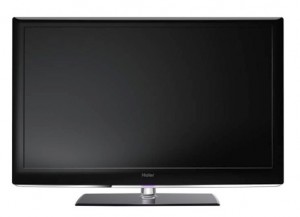 Consumer Reports announced that it has published its latest ratings of 142 Liquid Crystal Display (LCD) and plasma televisions.
Consumer Reports announced that it has published its latest ratings of 142 Liquid Crystal Display (LCD) and plasma televisions.
For more information visit: www.ConsumerReports.org
Unedited press release follows:
Consumer Reports Tests Show Bigger and Better TVs Abound as Super Bowl Nears
Larger Screens, More with 1080p Enhance Viewing Experience; Ratings of 142 LCD and Plasma TVs in March Issue of Consumer Reports
YONKERS, N.Y., Jan. 25, 2012 — Consumer Reports today released its latest Ratings of LCD and plasma televisions just in time for Super Bowl Sunday, when many Americans consider purchasing a new set. Those who are in the market will find a whole host of exciting features such as built-in Internet browsers, 3D, remotes with more interactivity, and bigger and wider screens to choose from.
The full report, which features Ratings of 142 LCD and plasma TVs, can be found at www.ConsumerReports.org.
“Although many TVs now come with the latest technologies, prices have still fallen considerably, making them an attractive purchase,” said Jim Willcox, Senior Editor for Electronics at Consumer Reports. “Shoppers who plan to purchase a new TV now, or in the next month or two, should expect to get a lot for their money.”
In the latest Consumer Reports Ratings of LCD and plasma TVs, there are 10 models with 60-inch or larger screens, including a 70-inch Sharp LCD TV. Additionally, the ranks of 3D-capable sets have grown, so too have models with full 1080p resolution and LCD TVs with 120Hz or higher refresh rates designed to reduce motion blur. And very good or excellent picture quality is nearly a given, with 135 of the 142 models tested by Consumer Reports achieving that level – even secondary brand models with relative low price points.
LCD or plasma?
Both LCD and plasma TVs can offer top performance, but they have different characteristics that consumers should weigh. There’s a greater variety of brands and screen sizes to choose from with LCD models, and most have ultra-thin designs and tend to be better in very sunny rooms. However, they do have limited viewing angles, which might concern people who like to watch anyplace but front and center.
Plasma TVs, on the other hand, only come in sizes 42 inches and up – and they typically give consumers more screen for their money. They also offer unlimited viewing angles and blur-free motion with more movie-like picture quality. And both plasma and LCD models should deliver years of good service.
3D or not 3D?
Even if consumers don’t envision themselves using the 3D feature now, there are still good reasons to consider investing in a 3D-capable TV. Many of the 3D TVs in Consumer Reports’ latest Ratings are among the highest-scoring sets it’s ever tested, and many of them are top-notch for regular HD, too. Furthermore, they often have other attractive features such as Internet access and Wi-Fi. Internet-connected TVs significantly expand the viewing possibilities available to consumers.
Even more technology on the horizon
Perhaps the most important development that TV makers have in the works is OLED. It’s a new technology designed to combine the best attributes of LCD and plasma TVs: ultra-slim designs, vibrant colors, wide viewing angles, great energy efficiency and very deep blacks. Samsung and LG have announced 55-inch 3D OLED TVs, which are expected to cost upwards of $8,000, making them unlikely to be mainstream until their prices fall.
Ultra-definition (UD) TVs are also coming soon, with resolutions of 4K, or four times that of 1080p models. 4K could ultimately contribute to what many consider to be the ultimate, glasses-free 3D viewing experience. However, there’s virtually no UD content to watch at home as of now.
Tips on getting the right TV for the Big Game
Consumers who are shopping for a new TV for the Super Bowl should keep the following tips in mind:
• Go bigger. A big game deserves a big screen, especially when watching it with a crowd. The good news is that price drops have been greatest on larger screen sizes.
• Get 1080p resolution. Unlike smaller sets, a TV with a big screen will benefit from “full-HD” 1080p resolution. Viewers will not only be able to see the difference in fine details—say, the textures in players’ uniforms or individual blades of grass—they’ll also avoid the “screen-door effect” that comes when you sit close to a TV, especially a very big TV.
• Go wide when it comes to viewing angles. While plasma TVs offer virtually unlimited viewing angles, the picture quality of many LCD sets starts to suffer if viewers move off-angle—something to consider for those who will have the gang over to watch the game,
• Don’t blur the action. Some LCD TVs can blur during fast-moving scenes, such as those in many sports games. Sets with 120Hz or 240Hz technologies, which speed up the TV’s frame rate, can help. Motion blur typically isn’t an issue with plasma TVs.
More tips on getting the right TV for the big game can be found at www.ConsumerReports.org.
Consumer Reports is the world’s largest independent product-testing organization. Using its more than 50 labs, auto test center, and survey research center, the nonprofit rates thousands of products and services annually. Founded in 1936, Consumer Reports has over 8 million subscribers to its magazine, website and other publications. Its advocacy division, Consumers Union, works for health reform, food and product safety, financial reform, and other consumer issues in Washington, D.C., the states, and in the marketplace.